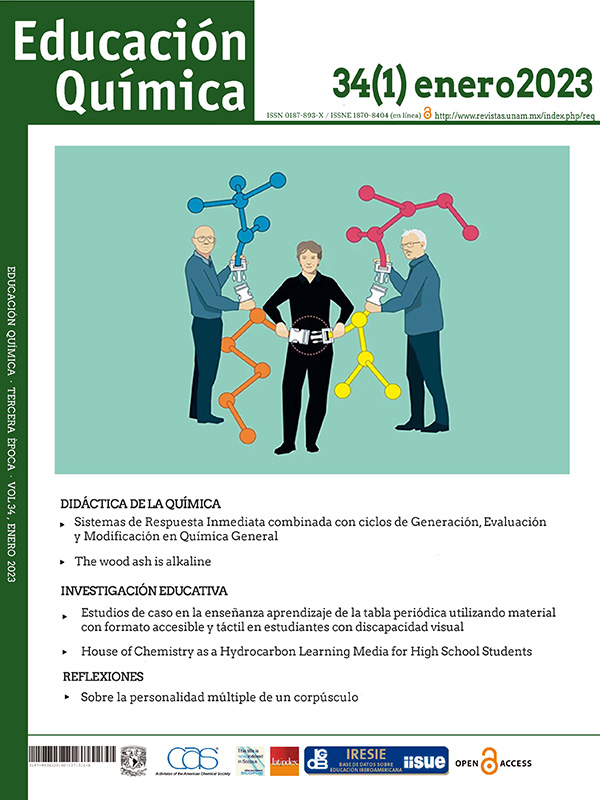Síntesis y evaluación de fotocatalizadores TiO2/carbón activo: un enfoque multidisciplinar y cooperativo para estudiantes de ingeniería química
Contenido principal del artículo
Resumen
El uso de la fotocatálisis para la eliminación de contaminantes presentes en las masas de agua ha experimentado una gran atención en las últimas décadas, y esto debería reflejarse también en la formación científica de los y las estudiantes del grado de ingeniería química. Con el objetivo de ampliar sus competencias en esta materia, se presenta un experimento multidisciplinar de cinco sesiones en el que se proporciona un espacio para el trabajo cooperativo. Este se compone de tres etapas secuenciales en el laboratorio: i) síntesis de fotocatalizadores, TiO2 sin soportar y soportado sobre carbón activo (CA, incluyendo la descripción paso a paso de la preparación del CA y la síntesis solvotermal del TiO2); ii) caracterización estructural y óptica de las muestras; y iii) evaluación de la actividad fotocatalítica (en la degradación de acetaminofeno, comercialmente paracetamol, utilizando luz solar) y la separación de la disolución; más una adicional de presentación y discusión de resultados. Los resultados del experimento mostraron que el TiO2 no soportado realiza la degradación más rápida del contaminante, mientras que el fotocatalizador soportado (TiO2/CA) presenta la mayor velocidad de sedimentación (y, por tanto, una recuperación más fácil del medio). El objetivo de esta actividad es fomentar en los y las estudiantes la capacidad crítica para considerar los dos aspectos de la aplicación general de un fotocatalizador, dándoles una visión multidisciplinar sobre cómo los fotocatalizadores pueden ser empleados para la protección del medio ambiente, desarrollando su concepción sobre justicia ambiental y su importancia en la ingeniería química.
Detalles del artículo
Citas en Dimensions Service

Educación Química por Universidad Nacional Autónoma de México se distribuye bajo una Licencia Creative Commons Atribución-NoComercial-SinDerivar 4.0 Internacional.
Basada en una obra en http://www.revistas.unam.mx/index.php/req.




